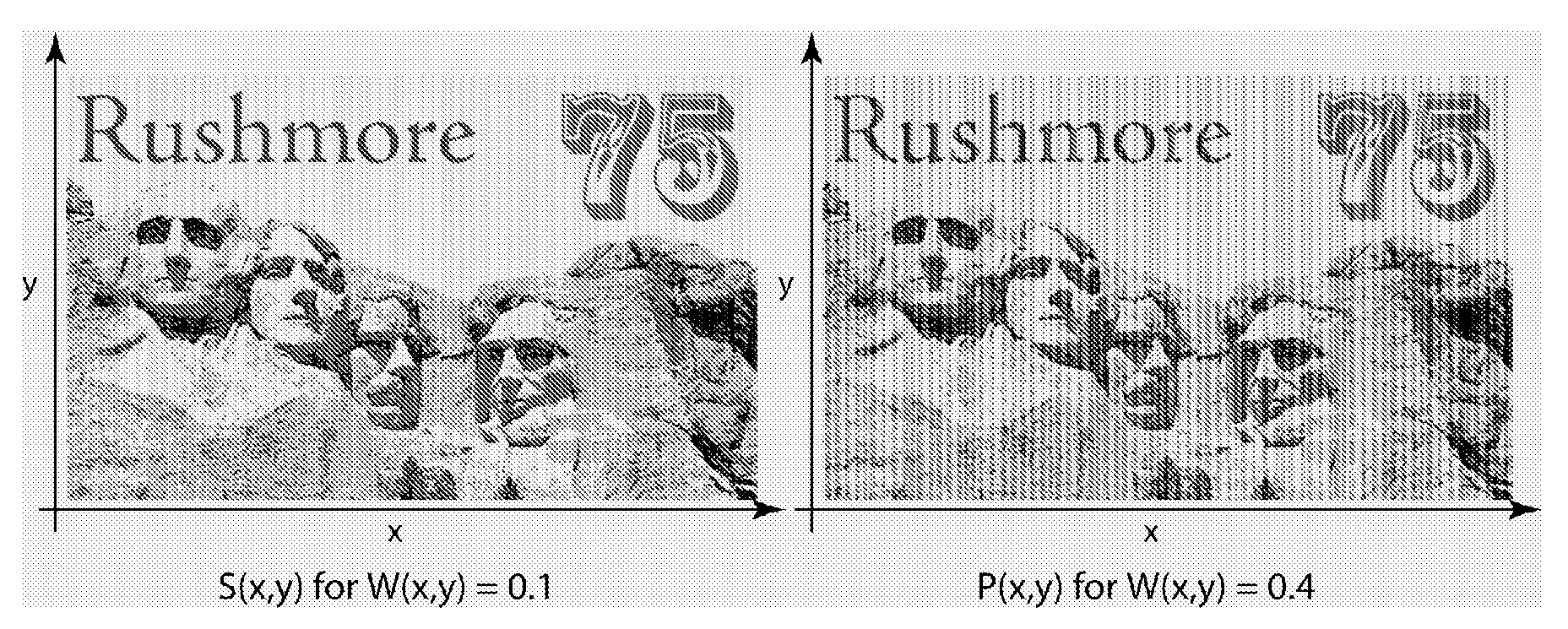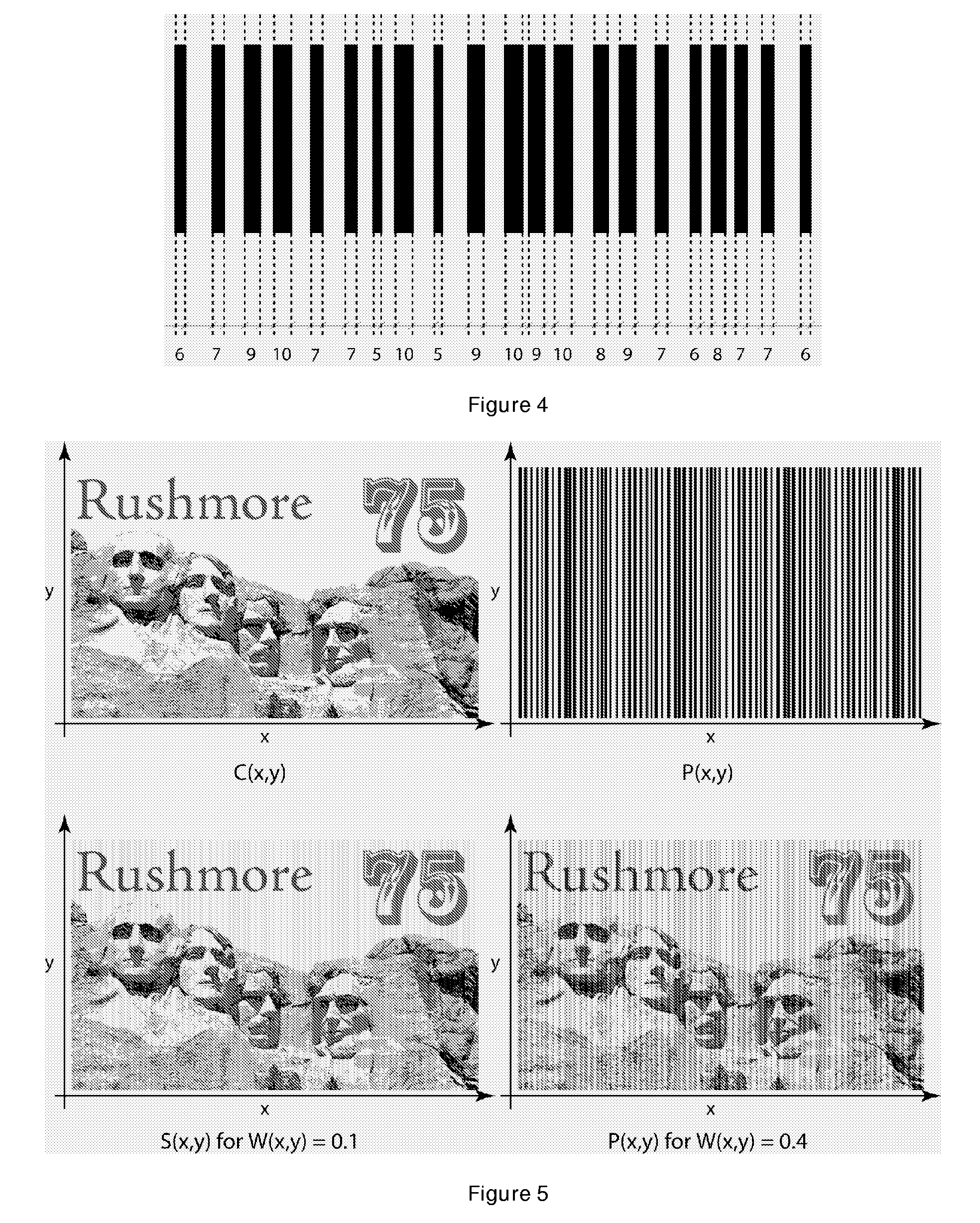Banknotes with a Printed Security Image That Can be Detected with One-Dimensional Signal Processing
a security image and banknote technology, applied in the field of banknotes, can solve the problems of low computational capacity of detectors, inability to implement detectors for invisible solutions directly into frequently used counterfeiting hardware, and lack of robustness of workarounds
- Summary
- Abstract
- Description
- Claims
- Application Information
AI Technical Summary
Benefits of technology
Problems solved by technology
Method used
Image
Examples
second embodiment
[0095]In the invention, the value of the stripes varies continuously along their width. With this variation, the shape of the signal carried by the security pattern takes the form of a continuous function like a sine wave (FIG. 6) or a triangle pulse (FIG. 7).
third embodiment
[0096]In the invention, the pattern undergoes a geometrical transform under the form of a conformal mapping (FIG. 8, FIG. 9, FIG. 10, FIG. 11). A particular case of a geometrical transform produces a pattern formed of concentric circles (FIG. 12). Such a pattern exhibits an invariant feature: the same signal can be detected across all the straight lines crossing the pattern through its center, regardless of their orientation. Such an invariant feature enables the detection approach based on an invariant signal.
[0097]Someone skilled in the art will also be able to realize above embodiments with any pattern obtained by sweeping a constant or varying signal.
fourth embodiment
[0098]In the invention illustrated in the FIG. 13, the original image is divided in several separate areas and the security document is obtained by embedding a different security pattern in each area.
PUM
 Login to View More
Login to View More Abstract
Description
Claims
Application Information
 Login to View More
Login to View More - R&D
- Intellectual Property
- Life Sciences
- Materials
- Tech Scout
- Unparalleled Data Quality
- Higher Quality Content
- 60% Fewer Hallucinations
Browse by: Latest US Patents, China's latest patents, Technical Efficacy Thesaurus, Application Domain, Technology Topic, Popular Technical Reports.
© 2025 PatSnap. All rights reserved.Legal|Privacy policy|Modern Slavery Act Transparency Statement|Sitemap|About US| Contact US: help@patsnap.com



